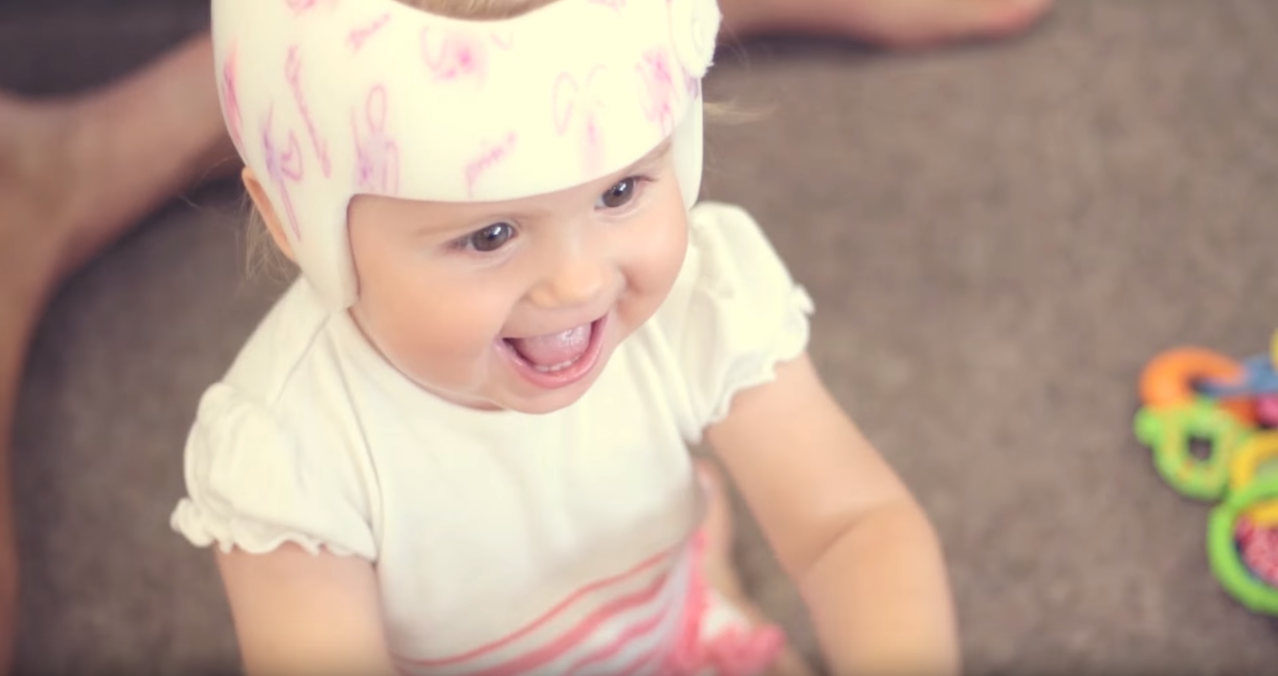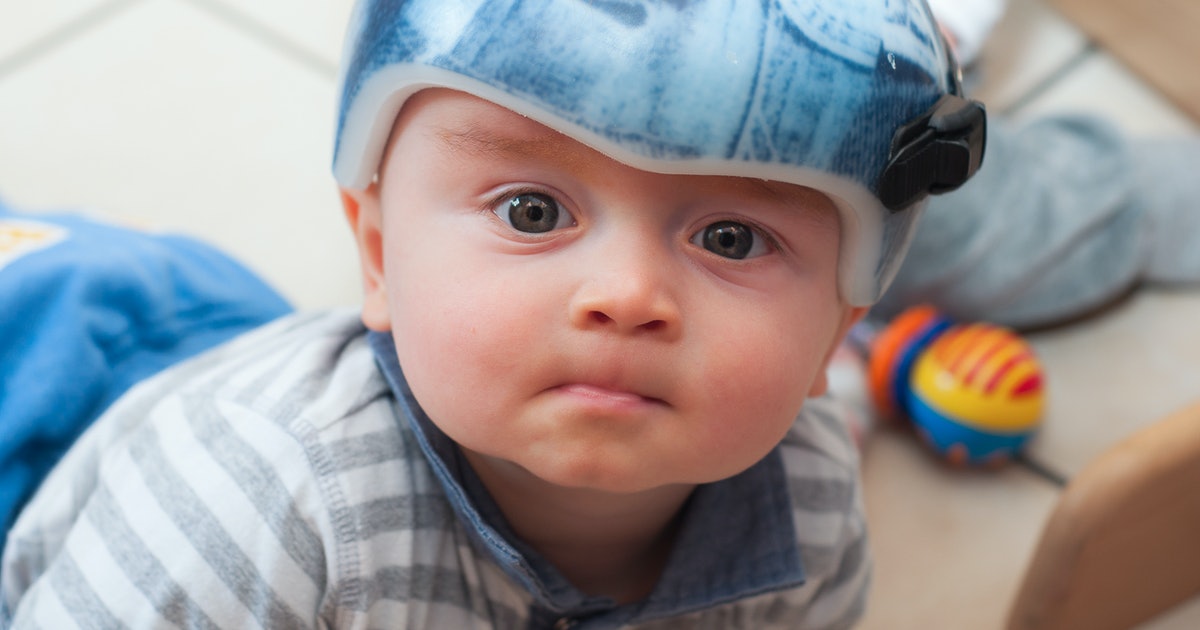Worried about your little one's safety? Give them the best protection with a baby safety helmet! Made from tough and durable materials, these helmets will keep your child safe from bumps and bruises. Choose from a variety of designs and colors to find the perfect helmet for your little one. Plus, they're so cute, everyone will want one!
Are baby safety helmets necessary?
It's natural for kids to explore, learn, and fall down frequently. That's simply how it is with young children. You don't need a helmet to safeguard your healthy youngsters from going about on their own.
One of the main reasons is to protect a baby from hurting themselves when they are learning to walk. It's pretty easy for them to fall over and hit their heads on the floor or furniture. Another great reason to have a baby safety helmet is when you are out and about. If you're going to be in a crowded place, or even just walking around the block, it's a good idea to have some extra protection for your little one.
There are many different types of baby safety helmets on the market, so you can find one that fits your child's personality perfectly. And they're not just for babies anymore! Toddlers and young children can benefit from wearing a helmet too.
Most experts agree that baby safety helmets should only be used when your child is engaging in a high-risk activity, such as biking, skateboarding, or inline skating. However, you know your child best. If you think they would benefit from wearing a helmet while playing outside or performing other activities, go ahead and put one on them.
What conditions do babies need helmets?
The most popular reason for helmets today is to address positional plagiocephaly or flat head syndrome. Positional plagiocephaly is caused by a variety of factors. By the age of five, in most situations, the problem will have resolved itself. However, if a parent is concerned, a helmet may assist in properly shaping the skull.
Craniosynostosis is another condition that may require the use of a baby safety helmet. This is a congenital disorder where the bones of the skull fuse together too early. If this happens, it can restrict brain growth and cause deformities. Surgery is often required to correct this problem. A misshapen head isn't the only reason for baby safety helmets, though. They are also used to prevent traumatic brain injuries in high-risk activities.
How effective are baby safety helmets?
Most studies on the efficacy of baby safety helmets have been small and have not looked at long-term outcomes. A systematic review of five studies found that the use of a helmet may help prevent head injuries in infants. However, the authors noted that the evidence was limited and more research is needed.
A larger study published in 2016 looked at data from over 23,000 children under the age of two who were treated in emergency departments for head injuries. The study found that the use of a helmet did not significantly reduce the risk of head injuries.
The American Academy of Pediatrics (AAP) does not currently recommend the routine use of helmets for infants and toddlers. However, they acknowledge that there are situations where the use of a helmet may be warranted.
At what age can a baby wear a helmet?
Helmets were never designed to protect against brain injuries. They provide no protection after the age of 2. Because three-quarters of brain growth occurs between the ages of two and two years old, babies' skulls are soft for a reason. Helmets are ineffective once a youngster's brain development is complete. Moreover, after the age of three, a helmet may actually do more harm than good.

How can I stop my baby from falling on the floor?
If your baby always falls on the floor, there are some things you can do to help them. First, make sure that they have a safe place to play. If they are always falling on the hard floors, consider getting them a playmat or some soft blocks to play with. When you need to depart for a short time while your baby is on a high surface, move them to a safe location such as a crib or playpen.
If your baby is constantly falling off of furniture, try to rearrange the furniture so that it is not as easy for them to climb on. You can also put barriers around the furniture or use child safety locks. Most experts agree that baby safety helmets should only be used when your child is engaging in a high-risk activity, such as biking, skateboarding, or inline skating. However, you know your child best. If you think they would benefit from wearing a helmet while playing outside or performing other activities, go ahead and put
Second, try to get them to walk with you instead of running off on their own. If they are constantly running into furniture or falling over, it might be time to put away the baby gates and have them walk with you instead. Finally, if your baby is constantly falling down, it might be time to talk to your pediatrician. They will be able to give you some tips on how to help your baby stay safe and injury-free.
How much does a helmet for a baby cost?
The American Academy of Pediatrics' latest policy statement on skull malformations was written by Dr. De Laughlin, an author of the AAP's position statement on flatheadedness. Helmets to correct flattened skulls cost from $1,300 to $3,000, and parents are advised to put them on their children 24 hours a day, seven days a week.
The same goes with safety helmets that protect your kid`s head when falling from the crib or climbing on high surfaces - the price ranges from $30 to $80.
How to choose a safety helmet for your child?
When choosing a safety helmet for your child, it is important to select one that fits properly. The helmet should sit snugly on the head and should not be too loose or too tight. It is also important to choose a helmet that is made from sturdy materials. The helmet should have a hard outer shell and a soft inner liner. Make sure that the helmet has been certified by the Consumer Product Safety Commission (CPSC). This certification means that the helmet meets all safety standards.
The shape is also quite important when choosing a helmet for your child. The helmet should have a round shape in order to protect the head from all angles. Size is also a vital consideration when selecting a helmet for your child. The helmet should not be too big or too small. It should fit snugly on the head without being too tight or too loose.
When choosing a safety helmet for your child, it is important to select one that fits properly and is made from sturdy materials. The helmet should also have a round shape in order to protect the head from all angles.
Soft bonnet or sturdy helmet?
When it comes to safety, it is always better to err on the side of caution. This is why many parents opt for a helmet instead of a soft bonnet when their child is engaging in activities such as biking, skateboarding, or inline skating.
However, some experts believe that helmets may actually do more harm than good after the age of three. This is because the brain development is complete and the helmet might cause more harm than good.
It is important to talk to your pediatrician before making a decision about whether or not to use a helmet. They will be able to give you the best advice for your child's individual situation. In general, baby safety helmets should only be used when your child is engaging in a high-risk activity.
Best safety helmets brands
There are many brands of safety helmets on the market. Some of the more popular brands include Bell, Giro, and Schwinn. When selecting a helmet, it is important to choose one that has been certified by the CPSC. This certification means that the helmet meets all safety standards.

It is also important to select a helmet that is the proper size and shape for your child's head. The helmet should fit snugly on the head without being too tight or too loose. Some of the best safety helmet brands include Bell, Giro, and Schwinn. These brands offer helmets that are made from sturdy materials and are certified by the CPSC. The helmets from these brands also come in a variety of shapes and sizes to ensure a proper fit for your child's head.
Bell:
This brand offers a variety of helmets for both infants and toddlers. The Bell Infant Helmet is designed for infants aged one year and under. This helmet features a padded headband and adjustable straps to ensure a comfortable and secure fit. The helmet also has an EPS foam liner for impact protection.
The Bell Toddler Helmet is designed for toddlers aged two to four years. This helmet features an EPS foam liner, padded headband, and adjustable straps. The helmet also has a visor to protect the child's eyes from the sun.
Giro:
If you are looking for a helmet for an older child, the Giro Scamp Kids' Bike Helmet is a great option. This helmet is designed for children aged five to eight years. It features an EPS foam liner, adjustable straps, and a visor. The helmet also has reflective strips to increase visibility in low-light conditions. With Giro helmets, your baby will be safe whether they are just starting to ride a bike or have been riding for years.
Schwinn:
The Schwinn Thrasher Microshell Helmet is another great option for kids. This helmet is designed for children aged eight years and up. It features an EPS foam liner, adjustable straps, and a visor. The helmet also has reflective strips to increase visibility in low-light conditions.
These are just a few of the many brands of safety helmets that are available on the market.
What are the alternatives?
If parents don`t want to use baby safety helmets, they might choose other forms of protective gear instead. This could include elbow and knee pads, as well as wrist guards. It is important to remember that no form of protective gear can completely prevent injuries. The best way to keep your child safe is to teach them how to properly engage in the activity and to supervise them at all times.
Baby safety is always a top priority for parents. There are a variety of products on the market that claim to make your baby safer. However, it is important to do your research before making a purchase. Some products, such as baby safety helmets, may actually do more harm than good. It is important to talk to your pediatrician before making any decisions about the use of safe products for your baby. They will be able to give you the best advice for your child's individual situation. In general, baby safety helmets should only be used when your child is engaging in a high-risk activity.
Final thoughts
When it comes to baby safety, there is no one-size-fits-all solution. Every family is different and what works for one may not work for another. The best way to keep your baby safe is to educate yourself on the products that are available and to make an informed decision about what is best for your family.